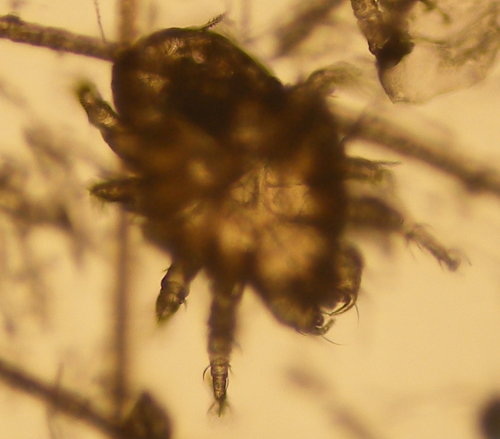Clinical Case 6 - Page 3
Courtesy of C. Antonczyk
This image is as viewed under the x10 objective.
In order to reveal an answer, highlight the underlined or bulleted area using your mouse. The number of bullet points doesn't necessarily indicate a strict number of answers.
What is this?
- This is a mite. It has long legs, making it a surface mite. It also has large claw-like palps, identifying it as a Cheyletiella sp. Cheyletiella yasguri is the most common species on the dog, but this mite is not completely host specific. Animals that are being treated with immunosuppressive drugs are more likely to be affected by clinical cheyletiellosis, perhaps reflecting a loss of the normal host-parasite balance.
Can this condition affect the owner?
- Yes. Owners may develop red papules in areas of prolonged contact with their pets, often on the chest and abdomen, as well as the arms.
How is this condition treated?
- There is no licenced treatment for cheyletiellosis. Various treatments can be used, including fipronil spray and selamectin. As well as treating the affected animal, any in-contact animals should be treated. To be effective, treatment duration often needs to be at least 2 months (e.g. two applications of selamectin) The environment must also be treated with an effective flea spray. The affected animal may benefit from shampooing with selenium sulphide shampoo.
To find out more you can use the link HERE.
